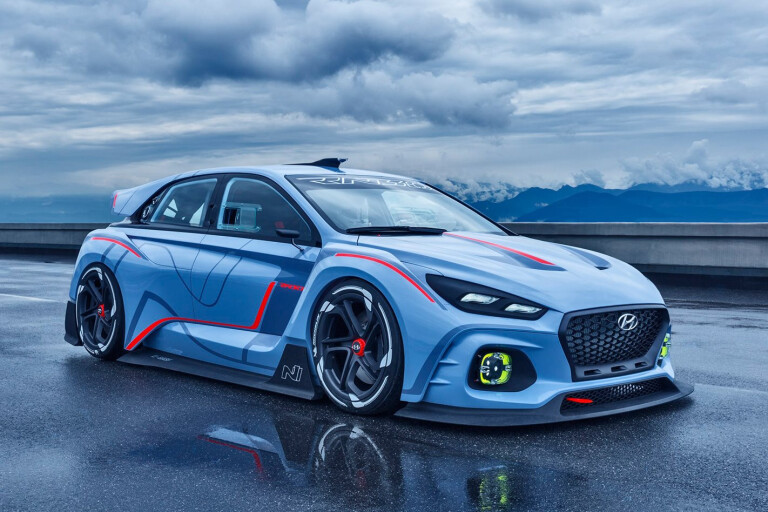
Hyundai has given a sneak peek of the potential of its upcoming N range of performance cars with the RN30 concept at the 2016 Paris motor show.
Sporting a 2.0-litre turbocharged engine delivering 280kW (or 279.5kW, to be precise) and 451Nm of torque, the RN30 is a track-inspired version of the just-revealed i30 hatchback and is designed to show off the performance potential of the upcoming i30N that is set to go into battle with the Volkswagen Golf GTI, Renault Megane RS, Subaru WRX and Ford Focus RS, among other hot hatches.
The new 2.0-litre turbo features a forged block for added durability over the more common casting production process, allowing engineers to fit a large turbo forcing plenty of air - and fuel - into the engine.
Drive is sent to all four wheels through a semi-automatic transmission with automatic rev-matching for perfectly timed downchanges. There’s an active all-wheel drive system that features an electronic limited slip differential (eLSD) to tame wheelspin and vector torque between the wheels when powering out of corners.
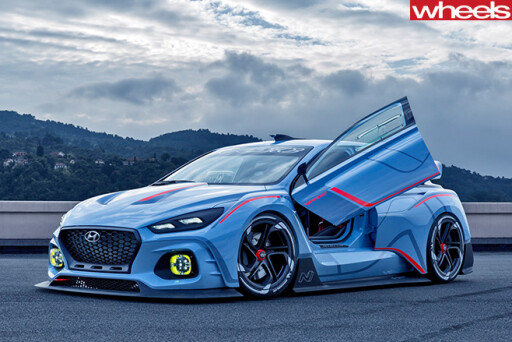 Like other technologies in the RN30 concept, they are being considered for upcoming production Hyundais.
Like other technologies in the RN30 concept, they are being considered for upcoming production Hyundais.
Developed under the guidance of former BMW performance car chief Albert Biermann – now Head of Vehicle Test & High Performance Development for Hyundai Motor - the RN30 reinforces its drivetrain attention to detail with an “Electronic Variable Exhaust” that supposedly “provides a surge of aural pleasure by emitting a strong exhaust sound consistent with the visceral sensations produced by the rapid acceleration”.
The sizeable central exhaust tips are ceramic-coated and integrated into the downforce-multiplying rear diffuser.
 Hyundai is not talking acceleration times for the RN30, although expect a 0-100km/h time approaching four seconds.
Hyundai is not talking acceleration times for the RN30, although expect a 0-100km/h time approaching four seconds.
Biermann says the RN30 concept is currently the pinnacle of Hyundai performance.
“RN30 embodies the concept of a strong, high-performance car that brings dynamic, sporty driving,” he said. “Soon to evolve into our first N model, the RN30 is inspired by our passion to provide a high-performance car that everybody can enjoy effortlessly. We have drawn on our technological expertise – honed through our motorsport successes – to deliver emotional delight through an engaging blend of performance and control, the goal Hyundai’s N strives to achieve in future performance models.”
While the RN30’s body is based on the i30 five-door’s basic bodyshell, it has been heavily modified for performance. Flared wheel arches create a broader footprint and widen the body by 30mm, while a lowered suspension system teams with a subtly revised roof profile to lower the centre of gravity, in turn lowering the height of the car by 84mm.
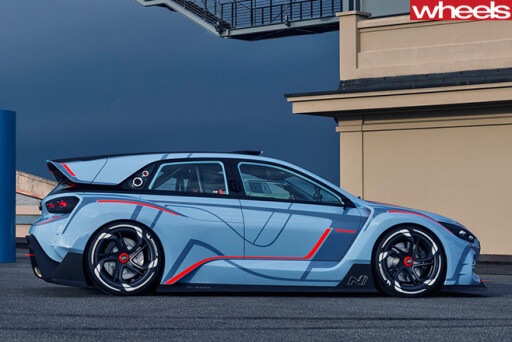 There are five doors, but the fronts open in a McLaren-like fashion; no word on whether recently appointed Genesis design chief Luc Donckerwolke – the former design boss at Lamborghini – had any influence on the theatrical doors.
There are five doors, but the fronts open in a McLaren-like fashion; no word on whether recently appointed Genesis design chief Luc Donckerwolke – the former design boss at Lamborghini – had any influence on the theatrical doors.
The bonnet has air outlets to help cool the feisty turbocharged engine, while a fin in the centre of the roof helps with high speed stability and creates a unique look.
Hyundai considered carbon fibre components but instead turned to plastics specialist BASF – a brand better known to baby boomers for producing cassette tapes – to create “all-new high-performance plastic materials”.
Hyundai says the new plastics are “light, highly durable and environmentally-friendly and are used throughout the new concept to help boost handling and acceleration”.
Being a race car, some interior components were removed and the seats placed lower and further back in the car, again with the aim of lowering the centre of gravity and centralising weight within the car.
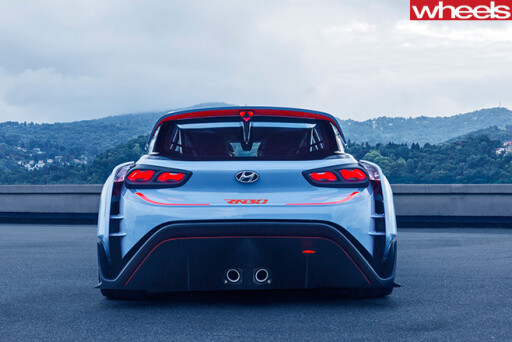 Distinctive daytime running lights and detailed LED headlights team with the new cascading grille to create an aggressive frontal design that helps define the character of the car.
Distinctive daytime running lights and detailed LED headlights team with the new cascading grille to create an aggressive frontal design that helps define the character of the car.
Confirming the RN30 is a car developed in the connected age are a trio of onboard cameras – complete with gimbals to provide a stabilised image that counters sudden movements of the car - added so “drivers can create professional-looking racing footage or present their experiences as if on television”.
Two of the cameras are built into each windscreen pillars (the A pillars) while a third is integrated into the fin on the roof.
While the RN30 is not slated for production we can except a least a little bit of its personality to rub off on the upcoming i30N hot hatc..
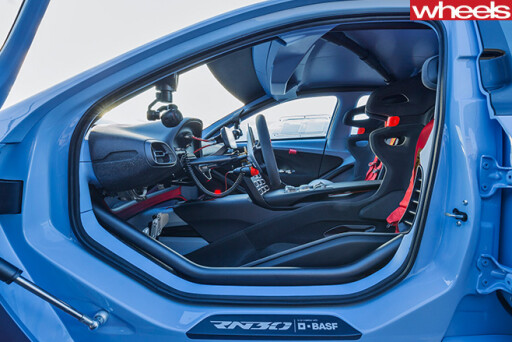 The i30N is expected to go on sale in 2017 with a 2.0-litre turbo engine with almost 200kW and front-wheel drive.
The i30N is expected to go on sale in 2017 with a 2.0-litre turbo engine with almost 200kW and front-wheel drive.
However, as reported by Wheels, the i30N family is expected to spawn a higher-output four-wheel drive version, which could borrow some thinking from the RN30 concept.
The Hyundai RN30 is the result of a collaboration between Hyundai Motorsport, Hyundai Motor Europe Technical Center and Hyundai Motor’s Performance Development & High Performance Vehicle Division.

COMMENTS